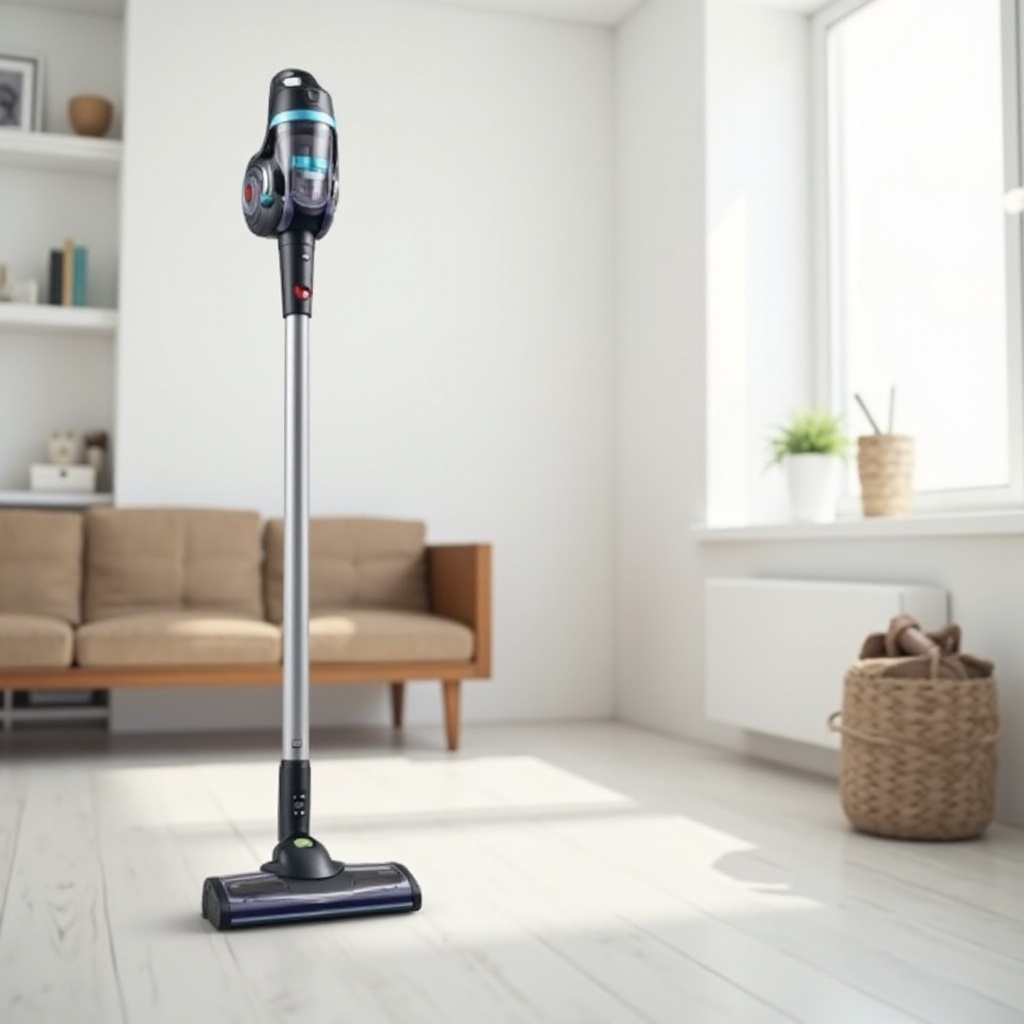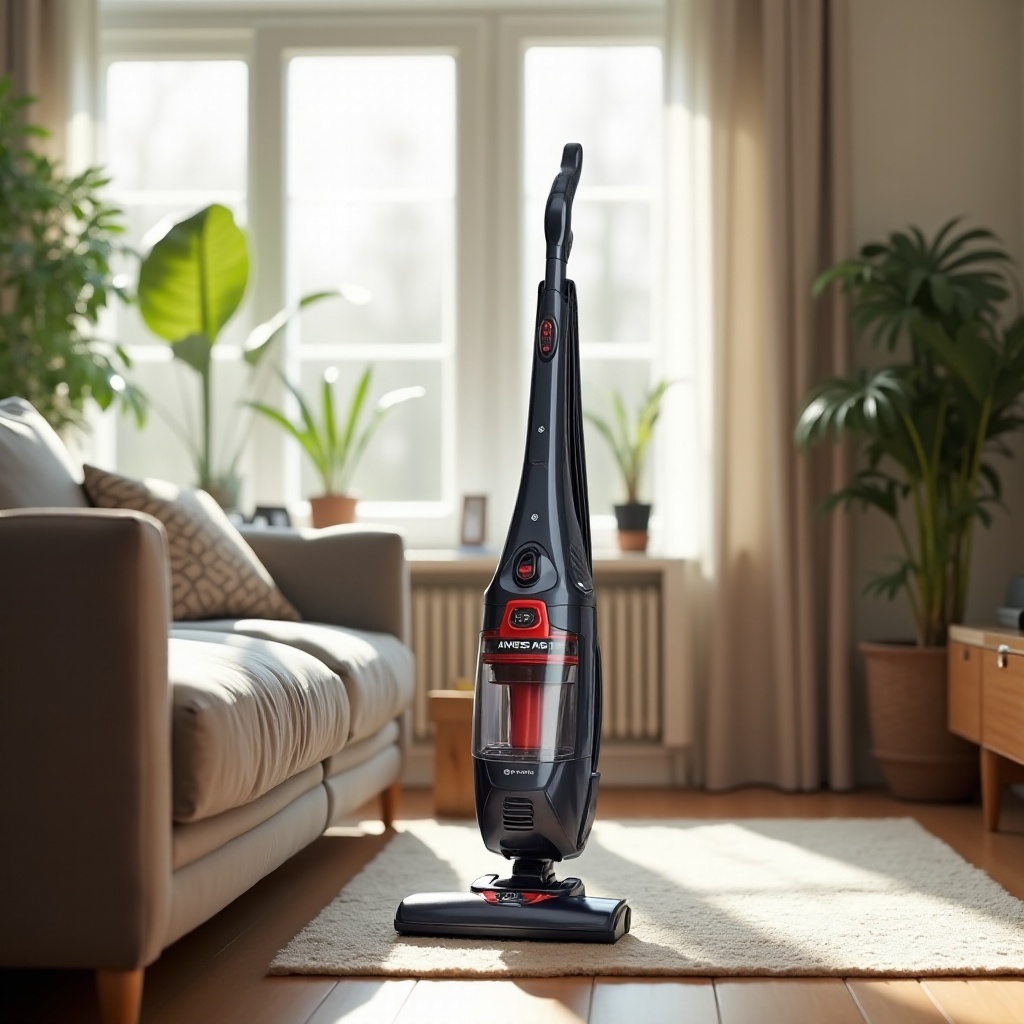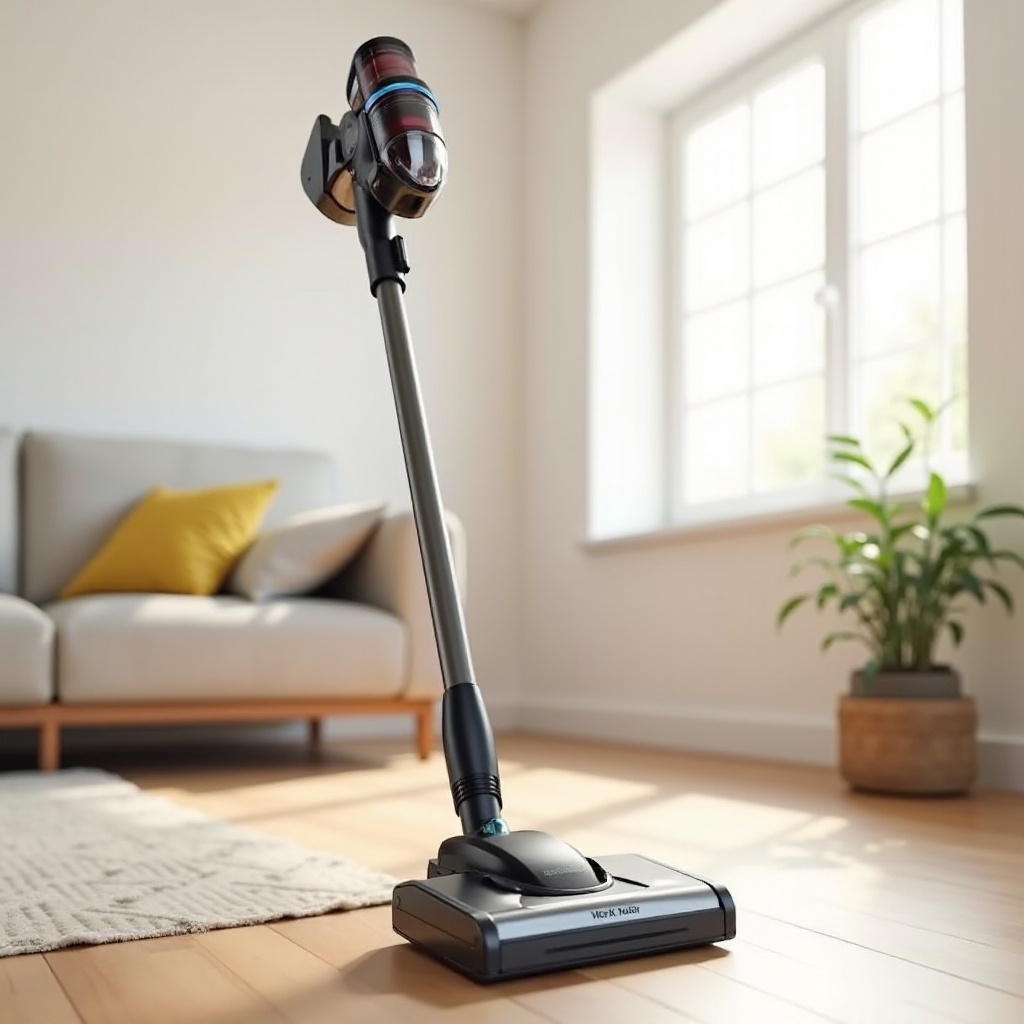Introduction
Vacuum cleaners are essential appliances for maintaining a clean, dust-free home. Among various types, upright vacuum cleaners hold a special place thanks to their design and efficiency. Known for their ergonomic construction, upright vacuums allow users to clean large areas quickly and comprehensively. This guide explores what makes upright vacuum cleaners unique, their key features, advantages, and tips for choosing the best model for your needs.

Defining Upright Vacuum Cleaners
Upright vacuum cleaners are vertical, all-in-one cleaning devices designed to simplify removing dust and dirt from various floor surfaces. Unlike canister models, upright vacuums integrate the motor and suction head into a single unit, offering several functional benefits such as ease of use, robust cleaning power, and efficient storage.
These cleaners typically come with a built-in rotating brush that can be adjusted to different heights, catering to various carpet lengths and types. They are not only excellent for cleaning carpets but also suitable for hardwood floors and tiles, thanks to their versatile configurations.
Key Features of Upright Vacuum Cleaners
Upright vacuum cleaners have several distinctive features, making them remarkable household tools:
-
Motorized Brushes: Most models have motorized brushes designed to agitate carpet fibers and effectively loosen dirt.
-
Adjustable Height Settings: This feature allows switching between different carpet lengths and hard floor surfaces, ensuring optimal performance on all floor types.
-
Wide Cleaning Path: Upright vacuum cleaners generally offer a broader cleaning path than other vacuum types, making them ideal for larger areas.
-
Built-in Filtration Systems: High-efficiency particulate air (HEPA) filters capture more allergens and fine dust particles, improving indoor air quality.
-
Attached Tools and Accessories: These vacuums often come with attachments like crevice tools, pet-hair brushes, and upholstery nozzles, enhancing their usability.
Types of Upright Vacuum Cleaners
With numerous models available, understanding the different types of upright vacuum cleaners can help you make an informed decision.
Bagged and Bagless Upright Vacuum Cleaners
Bagged Upright Vacuum Cleaners: These models use replaceable bags to collect dirt and dust. The bags often have substantial capacity, meaning fewer replacements and less exposure to dirt during disposal. They are excellent for allergy sufferers as the dust is confined within the bag.
Bagless Upright Vacuum Cleaners: These models use a dust canister that can be emptied into the trash. This type is convenient as it doesn’t require purchasing replacement bags, reducing ongoing costs. However, emptying the canister might expose users to dust and allergens.
Corded and Cordless Upright Vacuum Cleaners
Corded Upright Vacuum Cleaners: These vacuums need plugging into an electrical outlet, often boasting more powerful suction compared to cordless models. They can run indefinitely without needing to be recharged, making them ideal for extensive cleaning tasks.
Cordless Upright Vacuum Cleaners: Powered by rechargeable batteries, these vacuums offer greater mobility and flexibility since they aren’t tethered to a power outlet. They are perfect for quick cleanups or rooms without easily accessible outlets, though their battery life can limit the cleaning duration.
Advantages of Upright Vacuum Cleaners
Upright vacuum cleaners offer numerous benefits:
-
Ease of Use: The ergonomic handle and simple design make these vacuums straightforward to operate without extensive bending.
-
Efficient Storage: As they stand upright, these vacuums require less storage space, making them ideal for homes with limited storage areas.
-
Versatility: With adjustable settings and multiple attachments, they can clean various surfaces, from deep carpets to bare floors.
-
Strong Suction Power: Many upright models boast powerful motors, ensuring thorough cleaning, especially useful for homes with pets and heavy foot traffic.
-
Improved Air Quality: HEPA filters and other advanced filtration systems improve indoor air quality by trapping allergens and fine particles.
Disadvantages of Upright Vacuum Cleaners
Despite their many advantages, upright vacuum cleaners present some drawbacks:
-
Weight: Upright vacuums can be heavier and more cumbersome than other types, making them harder to maneuver, especially up and down stairs.
-
Noise: Often, upright vacuum cleaners are louder compared to other models, which could be a concern for some users.
-
Limited Flexibility: Their design may be less effective in reaching tight spots and under furniture compared to stick or canister vacuums.
-
Maintenance: Bagless models can expose users to dust when emptying the canister, and both types require periodic maintenance to ensure optimal performance.
-
Cost: High-end models, especially those with advanced features and attachments, can be expensive.

How to Choose the Right Upright Vacuum Cleaner
Selecting the appropriate upright vacuum cleaner depends on several key factors, helping you make an informed decision that best suits your cleaning needs.
Suction Power and Filtration
Focus on models with powerful suction capabilities, especially if your home has high-pile carpets or pets. The efficiency of the filtration system, preferably a HEPA filter, should be considered to ensure allergens and fine particles are effectively trapped.
Attachments and Accessories
Evaluate the range of attachments and accessories that come with the vacuum cleaner. Crevice tools, pet-hair brushes, and upholstery attachments can add significant value and versatility to your cleaning kit.
Budget Considerations
While advanced features and high-end models often come at a premium, many affordable options offer excellent performance for standard cleaning tasks. Decide on a budget that caters to your primary needs without compromising crucial features like suction power and filtration.

Conclusion
Upright vacuum cleaners are popular for their robust design, ease of use, and adaptability. By understanding their types, advantages, and potential downsides, you can make an educated decision that enhances your cleaning routine. Whether you choose a bagged or bagless model, or prefer the flexibility of a cordless vacuum, evaluating your specific needs will guide you to the perfect upright vacuum cleaner for your home.
Frequently Asked Questions
Are upright vacuum cleaners good for all types of floors?
Yes, most upright vacuum cleaners come with adjustable height settings and specialized attachments that make them suitable for all floor types, including carpets, hardwood, and tiles.
How often should I replace the filters in my upright vacuum cleaner?
HEPA filters should be replaced every six months to one year, depending on usage. Refer to the manufacturer’s guidelines for specific recommendations.
What should I do if my upright vacuum cleaner loses suction?
First, check for blockages in the hose or filters. Cleaning or replacing filters and ensuring the dust canister or bag is not overfilled are also effective steps to restore suction power.
